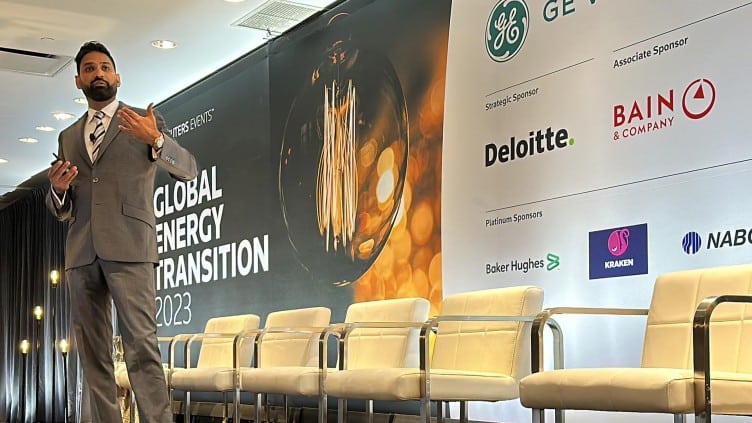If you want an example of how technology can change behavior, look no further than a sleep tracker, says Allyson Anderson Book, Chief Sustainability Officer of Baker Hughes.
“I couldn’t figure out why I wasn’t sleeping,” Book told a room full of energy leaders. “Now I know thanks to technology and digital, and I use that now to think about changing my behavior.”
Book made the comments on day one of the Reuters Global Energy Transition Event (Reuters Events Energy Transition) in New York as a way to illustrate the power technology can play in energy transition. The event is hosting more than 750 decision makers from the energy industry, uniting energy, industrial, and technology leaders.
Takeaways from day one included a focus on the key role technology will play in energy transformation; the importance of collaboration among industry stakeholders; and how energy transition timelines can be dramatically accelerated with the right investment and policy frameworks.

Computer Modelling Group Ltd. CEO, Pramod Jain, kicked off the technology and innovation side of the event with a keynote focused on de-risking energy projects by “taking off the blindfold” using simulation software.
Jain noted that over the last 22 years energy companies have paid nearly $54 billion in fines when a project goes wrong, and much of that could have been avoided if subsurface simulation software was used.
“For the finance folks in the room, you run financial models to forecast and mitigate the risk of changing commodity prices,” he said. “For the CEOs in the room, you approach mergers and acquisitions by assessing business models. For all of us pursuing energy transition, simulation is the way we model and predict outcomes.”
The first step is to take off the blindfold.

On collaboration:
“True innovation never happens in a silo, or in a function… it’s always at the intersections — it’s always multidisciplinary,” said Liam Condon, CEO of Johnson Matthey. “You’ve got to bring people [with] different skill sets. You need technologists, but you also need people who can communicate to the public. Unless we can bring the public along with us, the energy transition is not going to happen.”
Alfred Stern, CEO of Vienna-based OMV, agreed, adding that circular business models have different needs for collaboration. “It’s a much broader space of collaboration with many more people and also across supply chains,” he said.

On investment and policy:
“The one thing that’s really important to highlight is economic growth and energy growth move together, and they hold hands,” said Anna Shpitsberg, Deputy Assistant Secretary for Energy Transformation at the U.S. Department of State.
Virtually every session at the event addressed the U.S. Investment Reduction Act (IRA) as a leading example of how governments can unlock investment and accelerate transition.
“The IRA is working. Let’s just be very clear — it is driving demand today,” said Roger Martella, Group VP with GE Vernova. Martella said his company announced a $50-million investment to build a new on-shore wind turbine in the U.S. because of the IRA, and that other regions who create incentives for private companies are likely to see large companies like GE Vernova invest heavily. “This has been really a game changer for us, and for our customers.”
Attracting capital is important, and there’s still work to be done, said Gabriela Prata Dias, Head of the Business Models and Markets strategy at UNEP Copenhagen Climate Centre. “Finance prefers to invest on what they know rather than on what is coming,” she said, noting that finance leaders are conventionally more risk averse. “You have to create the conditions so that finance can move in and take a role. That’s what we’re trying to do with national and local governments.”

Who is poised to lead in the path to net zero?
“Some of the leading oil and gas companies will become some of the leading renewables companies that will happen faster than anyone imagines,” said Greg Jackson, Founder and CEO of Octopus Energy. Jackson noted that traditional investors, including those in utilities, have enjoyed de-risked work and that is going to change.
“Oil and gas companies are used to making colossal investments against market risks, and against technology risks at scale, with huge engineering challenges and geopolitical issues attached to those.”
The leading oil and gas companies that grasp the renewable energy opportunity will be some of the companies that drive change and grow at scale, he said.
To read the day 2 recap of the Reuters energy transition event in NYC, click here.
Sign up to receive newsletter updates from Accelerate on LinkedIn.







